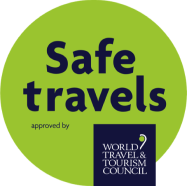Preserving our island’s beauty
Fascinating historical sites, rare wildlife and endemic plants. Here are some of the sights, reasons and areas we are protecting in Mauritius.
311 endemic plants
We have endemic plant species found nowhere else in the world. Mauritius is home to 671 native species of flowering plants and 311 of these are endemic to the island. Over 90% are considered to be threatened and about 100 species have less than 100 individuals in the wild. The Rare Plants Conservation Project aims to propagate Critically Endangered plants and find new sites for these rare endemic plant species to thrive.
25 species of indigenous land vertebrates
Mauritius is home to 25 species of indigenous land vertebrates. These endemic land vertebrates include mammals, birds, reptiles, insects and molluscs. The National Parks and Conservation Service is responsible for these protected areas of the country.
Protected areas in Mauritius
Wetlands
In September 2001, Mauritius adopted the Convention on Wetlands to protect and conserve the local marshes and to use them wisely in a sustainable way. Also called the Ramsar Convention (after the city in Iran in which it was first adopted), three sites of international importance were nominated in Mauritius. They are the Rivulet Terre Rouge Estuary Bird Sanctuary, the Blue Bay Marine Park and the Pointe D’Esny Wetland.
Marine Parks
Blue Bay Marine Park was declared a Marine Protected Area and designated a Marine Park in 2000. In January 2008, it was officially proclaimed as a RAMSAR site due to its marine species and ecological diversity. Covering an area of 353 hectares from Pointe Corps de Garde to Pointe Vacoas, it includes a rich marine ecosystem with diverse communities of marine flora and fauna. In 2012, under the ‘Partnerships for Marine Protected Areas in Mauritius and Rodrigues’ project of the United Nations Development Programme, the Global Environment Facility and the Mauritian government, an inventory of species was drawn up. The park includes about 108 species of corals, 200 species of molluscs, 38 species of echinoderms, 30 species of algae and 233 species of fish.
Mangroves
There are protected mangroves in Pointe d’Esny. Pointe d’Esny Wetland is a rare example of a wetland, characterised by a subtropical mangrove forest. It is home to Rhizophora mucronata and, reportedly, the rarer Bruguiera gymnorhiza, mud flats, and a sub-mangrove belt of pan-tropical coastal plants. The site provides habitat for some threatened plants and the native butterflies Phalanta phalantha and Eurema floricola ceres.
Bird sanctuaries
Rivulet Terre Rouge Estuary Bird Sanctuary is an important wintering ground and refuge for hundreds of migratory birds which yearly escape the rigorous winter months prevailing in the northern hemisphere. This site is a humid coastal zone, which was proclaimed as a Wetland Reserve in August 1997 and listed as a RAMSAR Site (wetlands of international importance designated under the Ramsar Convention) in September 2001.
10 National Parks
The National Parks and Conservation Service helps look after our island’s native biodiversity and ecosystems in Black River Gorges, Bras d’Eau and Islet National Parks. Find out more about National Parks in Mauritius.
Local NGOs
Active local NGOs include:
Mauritian Wildlife Foundation
- The Mauritian Wildlife Foundation is the largest non-governmental organisation (NGO) in Mauritius and focuses on the conservation and preservation of endangered plant life and animal species in Mauritius. Projects and conservation work take place in areas such as Ile aux Aigrettes Nature Reserve.
Reef Conservation
- Reef Conservation in Mauritius is a non-profit organisation dedicated to the conservation and restoration of the island’s coastal and marine environment. This includes research, monitoring and community outreach.




